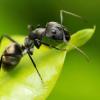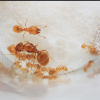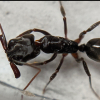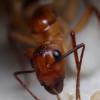I had a funny (more frustrating...) discussion in German ant keeping facebook group "Ameisenhaltung" with a moderator there "Nico G." who tells everybody who collected a winged queen that they should release the queen, because:
"All winged queens are either unmated or haven't properly mated"
I told him that this statement is wrong because queens often shred their wings after collecting, or some even lay eggs while still having their wings. Unfortunately, I couldn't convince him and his two supporters, which had other quite funny beliefs about ants like: "Ant queens mate with 40 males" or "Ant queens after having their nuptial flight can simply take off again and search for a male to mate".
How do you see this, do you not collect any winged queens and just the wingless ones or do you still collect queens even if they still have their wings?
I personally collect both wingless and winged queens but winged ones only if not near a nest and if it is not a very common and species like Lasius niger or Lasius flavus.

























